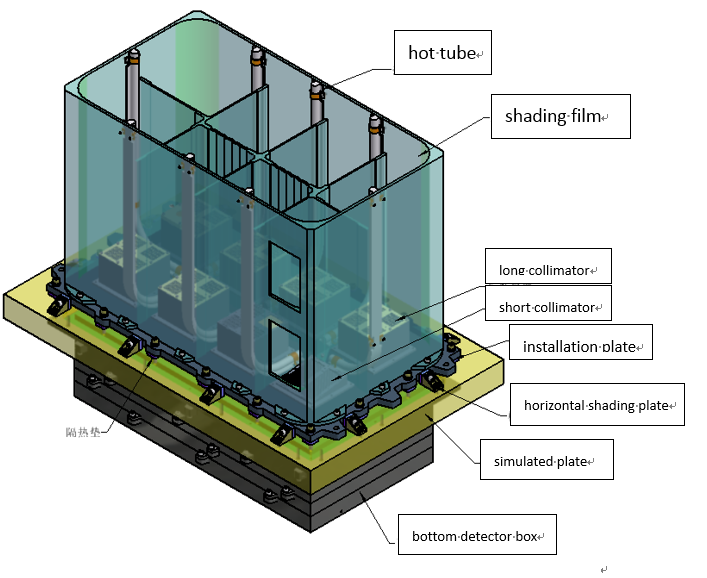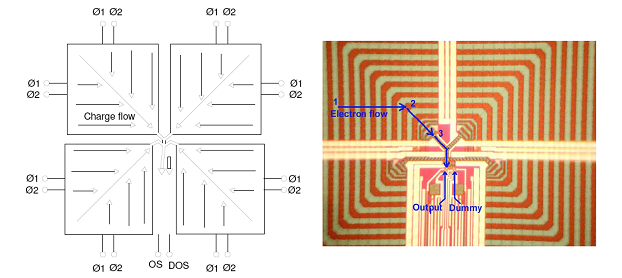Low energy X-ray telescope (LE)
The overview of Insight-HXMT/LE is taken from Chen et al (2020). LE mainly performs observations with high energy resolution (150eV@5.9keV) and high time resolution (1 ms) in 1-15 keV. LE contains 3 independent detector boxes, controlled by a power-control module. Each box includes 8 detector modules, and each module has 4 CCD236. The area of each box is 128 cm2, and hence the total area is 384 cm2, as described in Fig. 1.

Fig. 1 The structure of one LE detector box. The top gray part is the collimator, and the semi-transparent part is the block cover.
There are eight collimators in each LE detector box, seven long collimators and a short one. Each long collimator contains 4 collimation units, and each short one has 2 units, i.e., a total of 30 collimation units. The height of the long collimator is 53.5 cm, including 3 FOVs of 1.6°×6.0° and one FOV of 4.0°×6.0°. Every LE detector unit contains two blocked long collimators, i.e., those with FOV of 1.6°×6.0° and 4.0°×6.0°. The height of the short collimator is 27.5 cm, including two units with FOVs of 50~60° × 2~6°.
The soft X-ray filtering film allows the penetration of the soft X-ray radiation, and screens the optical and ultra-violet light to LE’s CCD, which can effectively decrease the noise of the observation. In order to resist the vibration during satellite launch and the background noise, the filtering film should satisfy the mechanical strength and radiation resistance, but also allow the penetration of the soft X-ray radiation as much as possible. Thus, the filtering film is composed of aluminum shell, polyimide shell and Ni frame. Here the aluminum shell (with thickness of 200 nm) can inhibit the optical radiation, polyimide shell (with thickness of 400 nm) can strengthen the mechanical performance of the film, and the Ni frame can supply the stability of the whole film.
The swept charge device (SCD) is adopted as the detector of LE. SCD is a kind of special CCD, which can quickly output the information of the injected X-ray photons by discarding the position information, with time resolution of 1 ms. Due to small dark current, low electric capacity, and low noise, SCD displays good energy and time resolution, with lower detection energy threshold down to 1 keV. CCD236 is a SCD detector jointly developed by IHEP and e2v company (see Fig. 2), applying virtual/real output to reduce common mode noise, and the chip area of each detector is 4 cm2. In the CCD236, there are many small electrodes, which collect the electrons produced during the low energy X-ray photons (1-15 keV) injecting the CCD236. The number of the electrons is positively correlated with energy deposition of the incident X-ray photons. The electrons can reach the output point, and can be converted into the voltage signal via the interior front end charge sensitivity amplifier.

Fig. 2 The structure of CCD236 and its readout (installed in the center of the detector).
